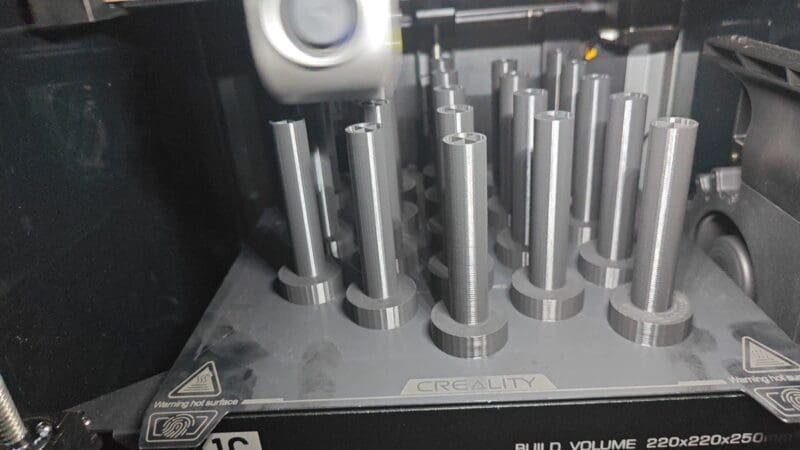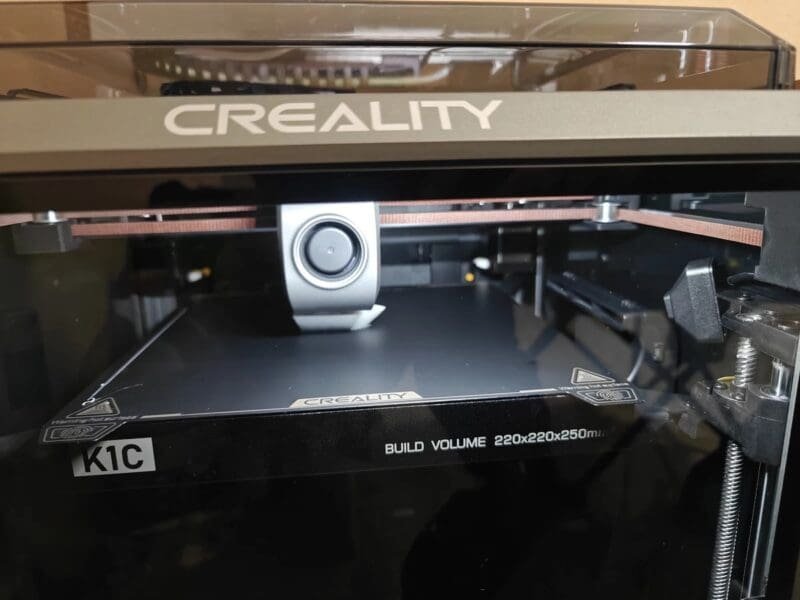Klipper vs OctoPrint: Which is the Better Choice for 3D Printing?
Introduction
In the dynamic world of 3D printing, the choice of firmware is a critical factor in achieving high-quality and reliable prints. This article presents an engaging comparison between two leading firmware options, Klipper vs OctoPrint, each renowned for its unique features and capabilities. Our exploration is designed to guide you to the firmware that best fits your 3D printing aspirations.
We will compare the features, installation process, and performance of Klipper and OctoPrint. We will also explore the customization options and compatibility of each firmware. By the end of this article, you will have a clear understanding of the strengths and weaknesses of both Klipper and OctoPrint, helping you make an informed decision on which firmware is the better choice for your 3D printing needs.

Klipper vs OctoPrint
Klipper: Revolutionizing 3D Printer Firmware
Klipper distinguishes itself as a firmware specifically designed for 3D printers, renowned for its exceptionally precise control over stepper movements. Its defining characteristic is ultra-high performance, coupled with compatibility for printers that operate using multiple microcontrollers.
Unique to Klipper is its method of utilizing an application processor, such as a Raspberry Pi, for the computation of printer movements. This approach significantly boosts print speeds and noticeably enhances the overall print quality. Moreover, Klipper is equipped with innovative features like smooth pressure advance and input shaper, effectively minimizing extruder oozing and refining the sharpness of print corners.
OctoPrint: Streamlining 3D Printing with a Web Interface
In contrast, OctoPrint emerges as a software solution, offering a comprehensive web interface for the seamless management and monitoring of 3D printers. This software enables users to seamlessly upload STL files to their printer, manage printing operations remotely, and even monitor the printing process through a webcam. What sets OctoPrint apart is its extensive customizability, boasting a wide array of plugins and functionalities. These include advanced features like automated bed leveling and the ability to record timelapse videos of the printing process.
Synergizing Klipper and OctoPrint for Enhanced 3D Printing Experience
Although Klipper and OctoPrint are designed for distinct purposes, they can be remarkably synergistic when used in conjunction. Integrating Klipper with OctoPrint allows users to leverage the high precision and performance capabilities of Klipper while simultaneously enjoying the user-friendly interface and extensive features that OctoPrint offers. This combination represents a powerful toolset for any 3D printing enthusiast or professional, aiming to achieve superior print results with greater ease and flexibility.
Comparison of Features
In terms of features, Klipper offers advanced customization options and precise control over your prints, while OctoPrint focuses on remote management and monitoring. Depending on your needs and preferences, you can choose the firmware that best suits your 3D printing workflow.
Installation and Setup
When it comes to installing and setting up Klipper and OctoPrint, both options have their own unique processes.
For Klipper, the installation process involves obtaining the printer’s configuration file and making any necessary modifications. This file can usually be found in the Klipper config directory, and if a specific configuration file doesn’t exist, a “generic” configuration file can be used instead. Once the configuration file is ready, it needs to be transferred to a Raspberry Pi computer and flashed into the microcontroller. Additionally, OctoPrint needs to be configured to communicate with Klipper for the changes to take effect.
On the other hand, OctoPrint has its own installation process. It typically involves downloading the OctoPrint software and setting it up on a Raspberry Pi or other compatible devices. Once installed, OctoPrint can be accessed through a web browser, allowing users to remotely control their 3D printer and monitor the print progress.
Both Klipper and OctoPrint offer detailed documentation and user guides to assist with the installation and setup process. It is important to carefully follow the instructions provided to ensure a successful installation.
Performance and Precision
Klipper is known for its high precision stepper movement, thanks to its use of an application processor like a Raspberry Pi for calculating printer movements. This allows for more accurate and smooth movements, resulting in better print quality. Klipper also supports high stepping rates, allowing for faster print speeds without sacrificing precision. With its support for multiple micro-controllers, Klipper can efficiently control different aspects of the printer, further enhancing performance.
On the other hand, OctoPrint focuses more on the monitoring and control aspects of 3D printing. While it may not directly impact the precision of prints, OctoPrint’s web interface allows users to monitor the progress of prints remotely. This is especially useful for those who want to keep an eye on their prints while away from the printer. OctoPrint also supports the use of webcams, allowing for live streaming of prints, which can be helpful for troubleshooting and ensuring print quality.
In terms of precision, Klipper’s “smooth pressure advance” feature helps reduce extruder “ooze” and improve the quality of print corners. Additionally, its “input shaper” feature reduces the impact of vibrations on print quality, resulting in smoother and more precise prints.
Customization and Configuration
Klipper excels in this area with its high level of customization potential. The firmware is written in Python, making it easier for users to edit the configuration files and change settings such as acceleration, jerk, and Z height. Klipper also offers a wide range of community-created plugins and modifications that allow for further customization of your setup. Whether you want to fine-tune your prints or add new features, Klipper provides the flexibility to do so.
On the other hand, OctoPrint also provides options for customization and configuration. While it may not offer the same level of customization as Klipper, it still allows users to change printer settings and customize their printing experience. OctoPrint’s user-friendly interface makes it easy to navigate and modify settings, making it a great choice for those who want a more streamlined approach to customization.
Compatibility and Integration
Klipper is compatible with a wide range of microcontrollers, including ARM, AVR, and PRU-based microcontrollers. This means that existing “reprap” style printers can run Klipper without any hardware modifications, simply by adding a Raspberry Pi. Additionally, Klipper works with OctoPrint, allowing users to easily control their printer and monitor their prints remotely.
OctoPrint, on the other hand, is designed specifically for 3D printing and offers compatibility with a wide range of printers and firmware, including Marlin and Klipper. It provides a user-friendly interface and allows users to easily manage their prints, monitor progress, and control their printer remotely. OctoPrint also supports plugins, which further enhance its functionality and allow for customization based on individual needs.
Both Klipper and OctoPrint offer APIs and plugins that enable users to extend the functionality of their 3D printers. This means that users can integrate additional features, such as webcam streaming, print monitoring, and advanced print settings, into their workflow.
In terms of compatibility and integration, both Klipper and OctoPrint provide robust solutions that allow for seamless integration with a variety of printers and accessories. Whether you choose Klipper or OctoPrint, you can be confident that your 3D printer will work seamlessly with these powerful tools.
Conclusion
The choice between Klipper and OctoPrint ultimately rests on individual preferences and specific requirements. Klipper stands out for those who value heightened precision and extensive customization capabilities. Conversely, OctoPrint is more suited for users who prioritize ease of remote management and a user-centric interface. Regardless of the selection, both Klipper and OctoPrint are formidable tools in the realm of 3D printing, each capable of significantly elevating the quality and efficiency of print projects.
DISCLOSURE: THIS POST MAY CONTAIN AFFILIATE LINKS, MEANING I GET A COMMISSION IF you DECIDE TO MAKE A PURCHASE THROUGH MY LINKS, AT NO COST TO YOU. PLEASE READ MY DISCLOSURE FOR MORE INFO.



